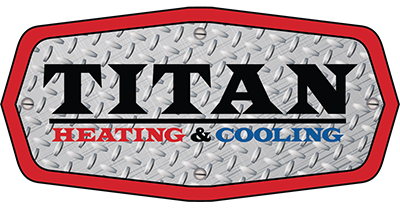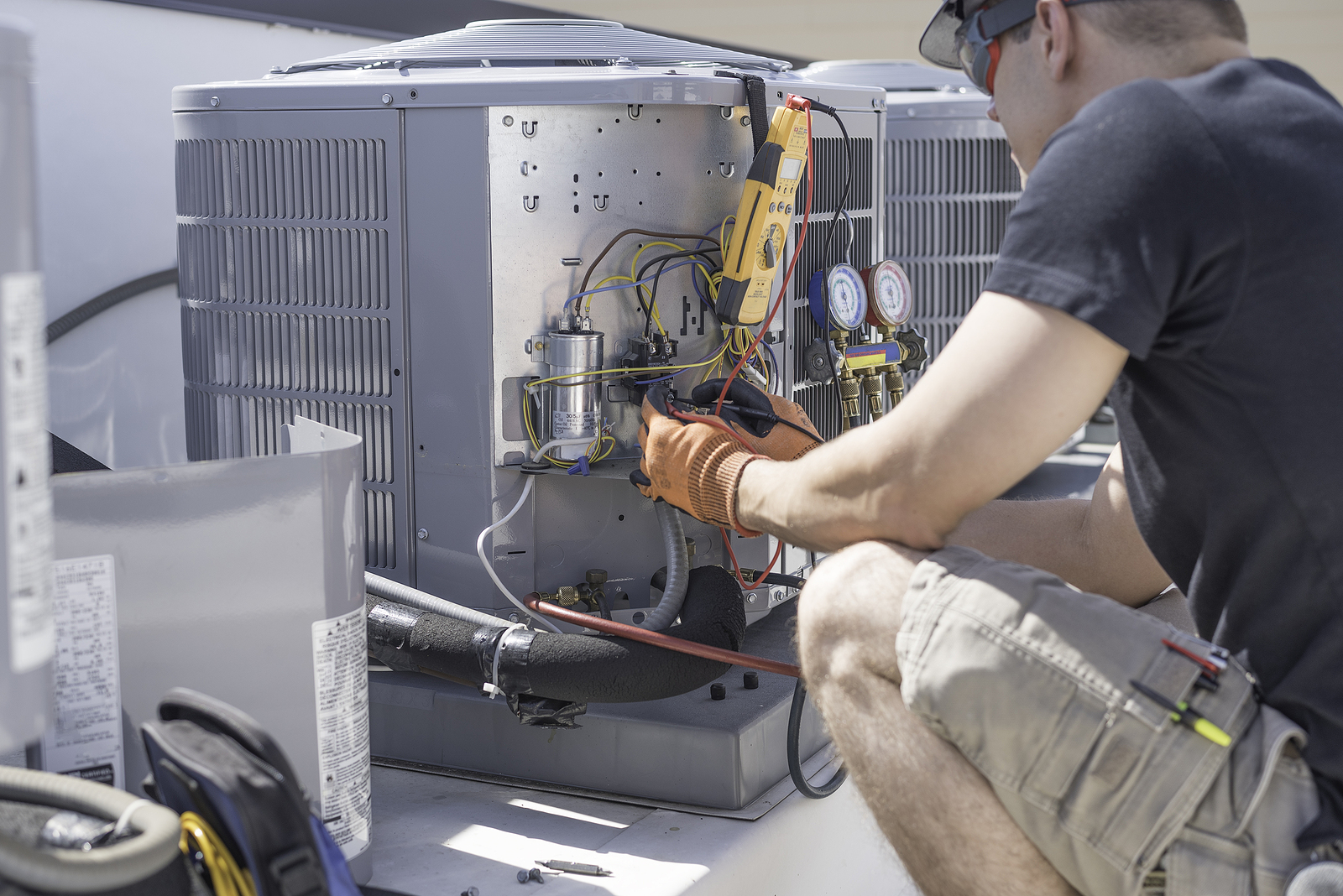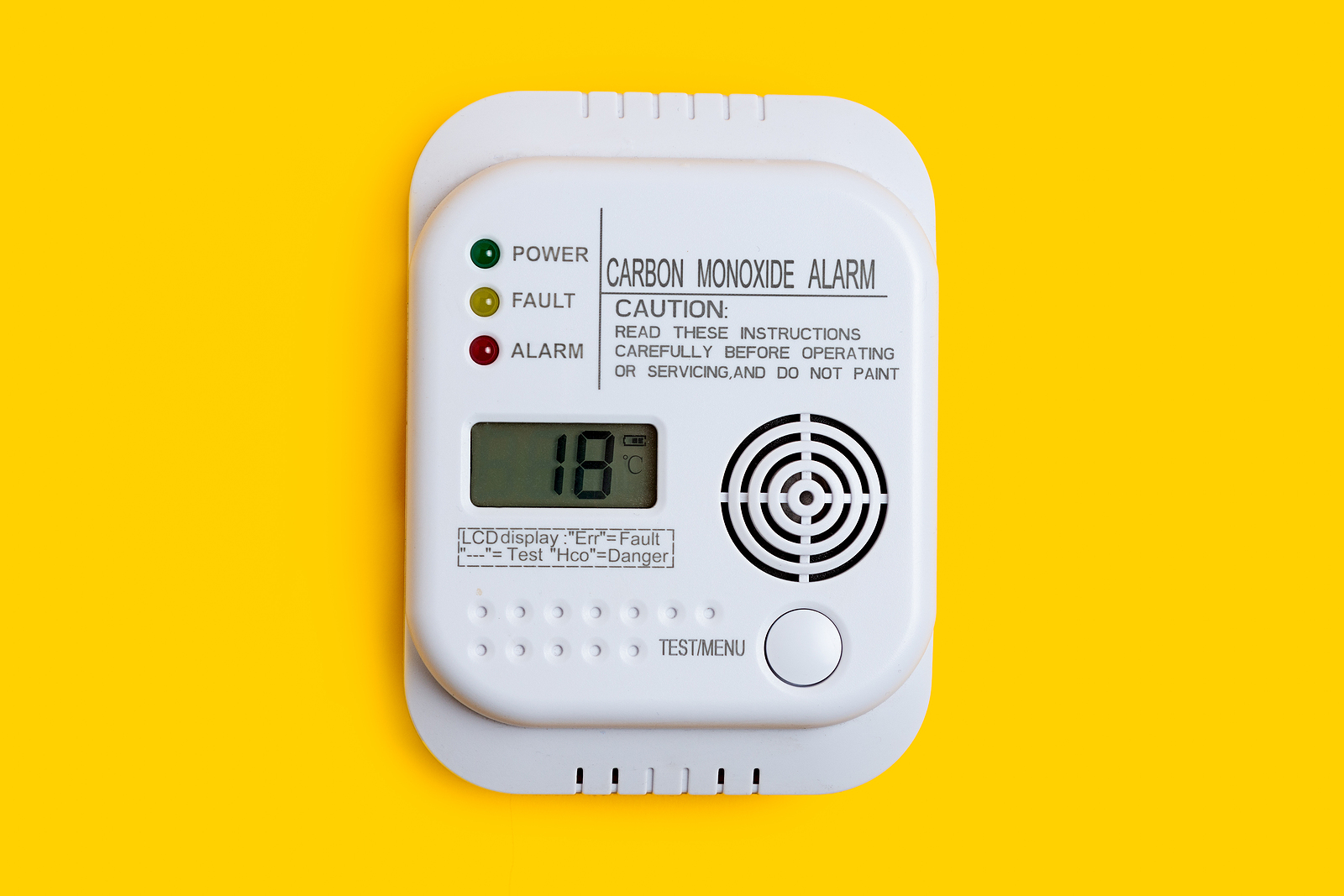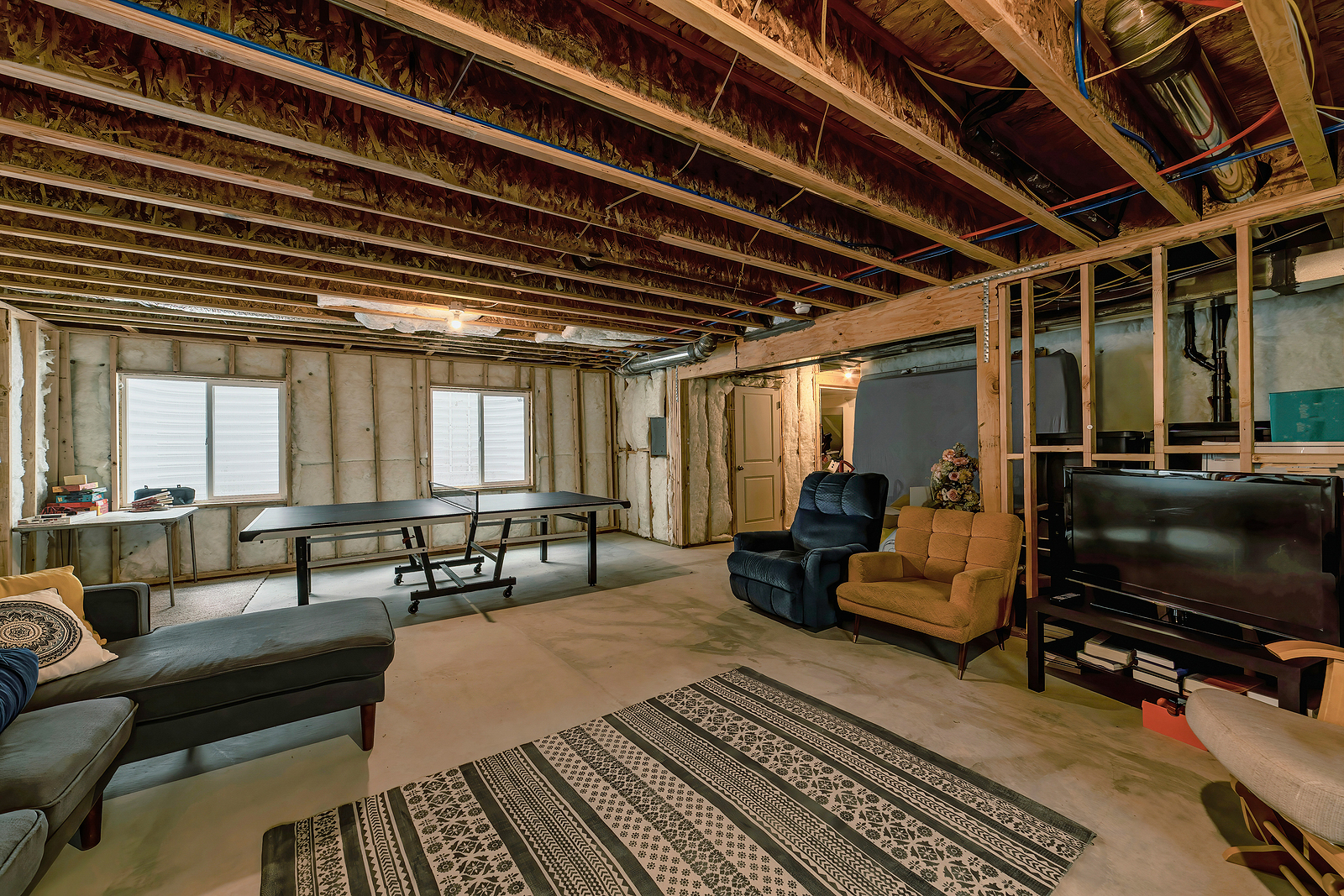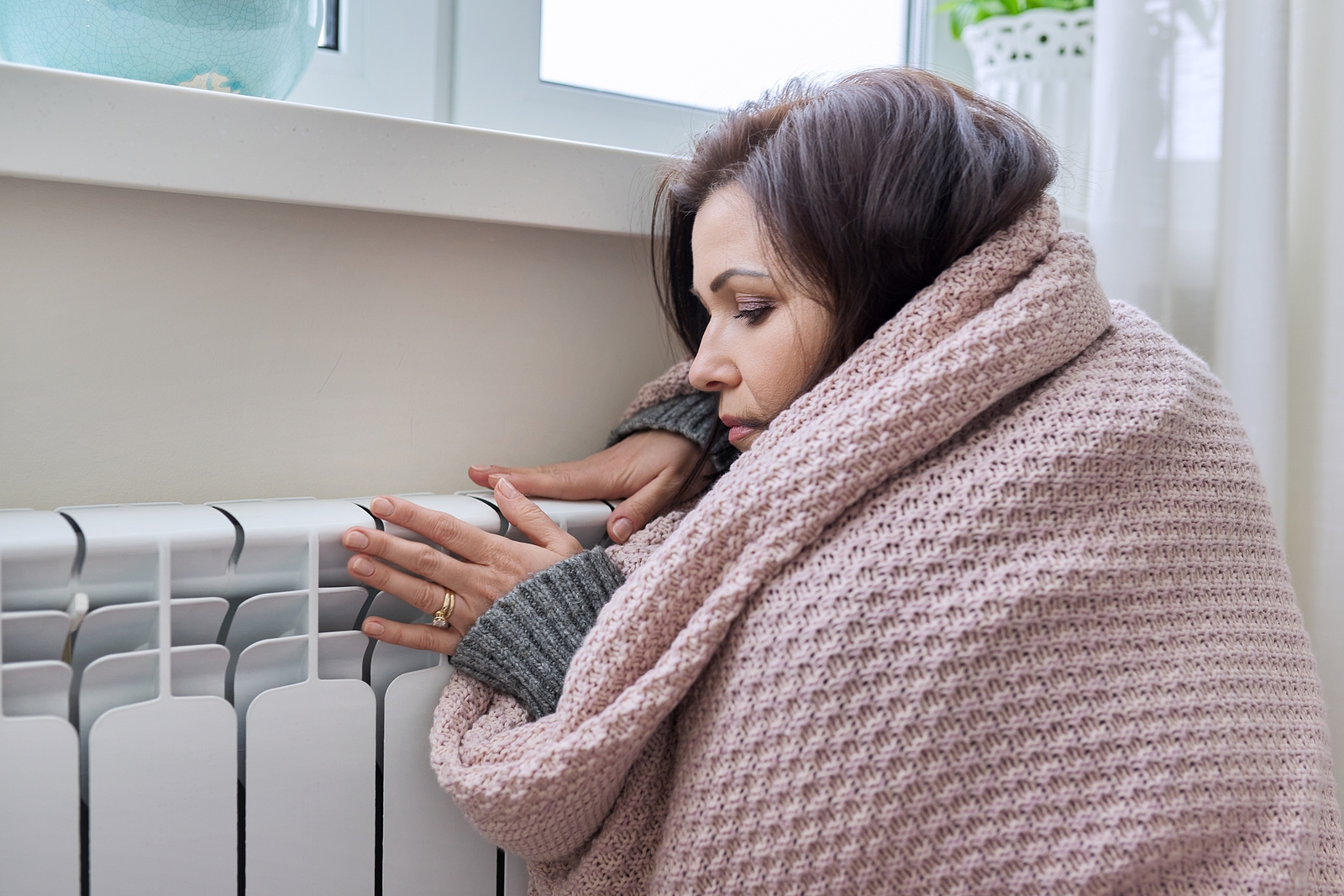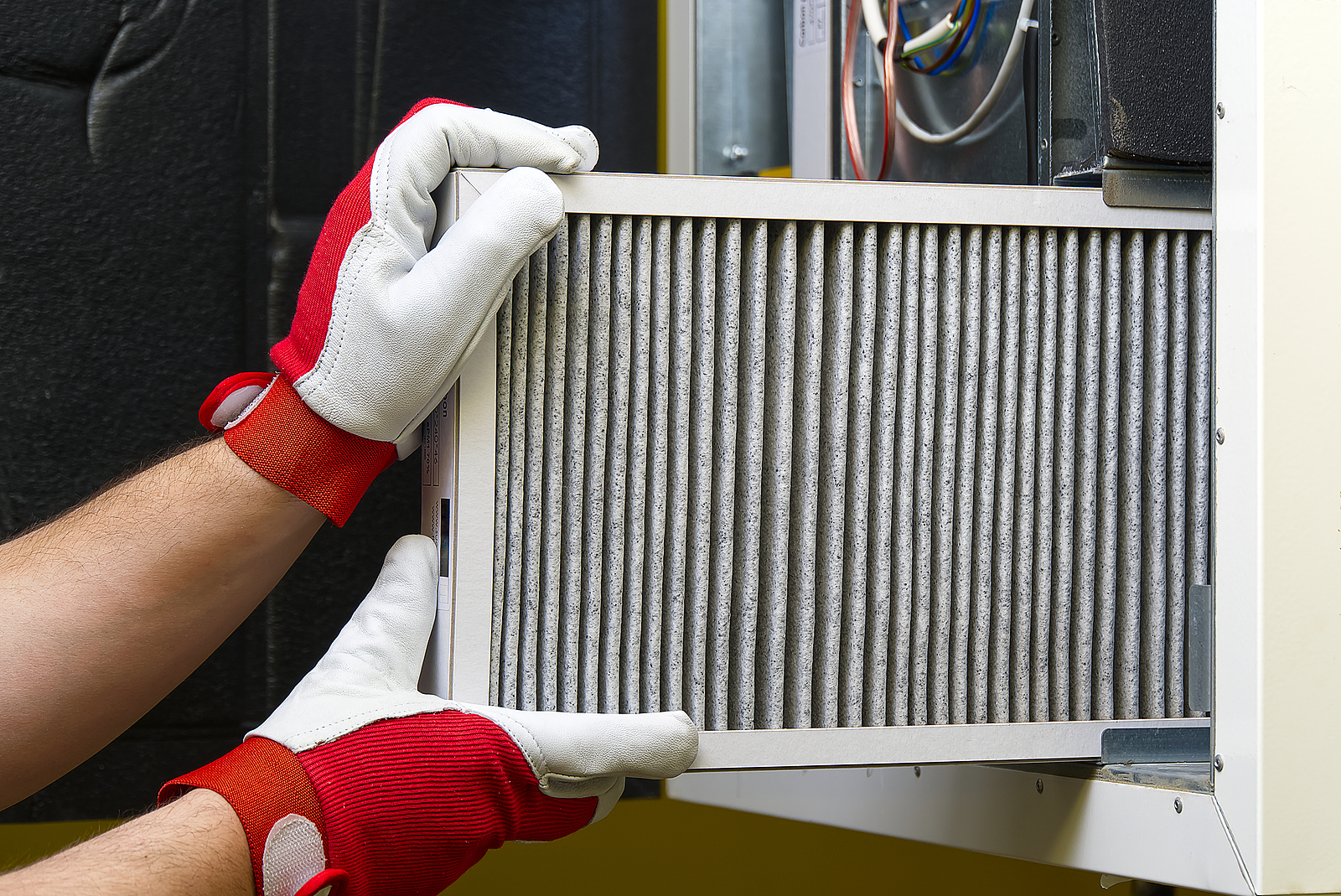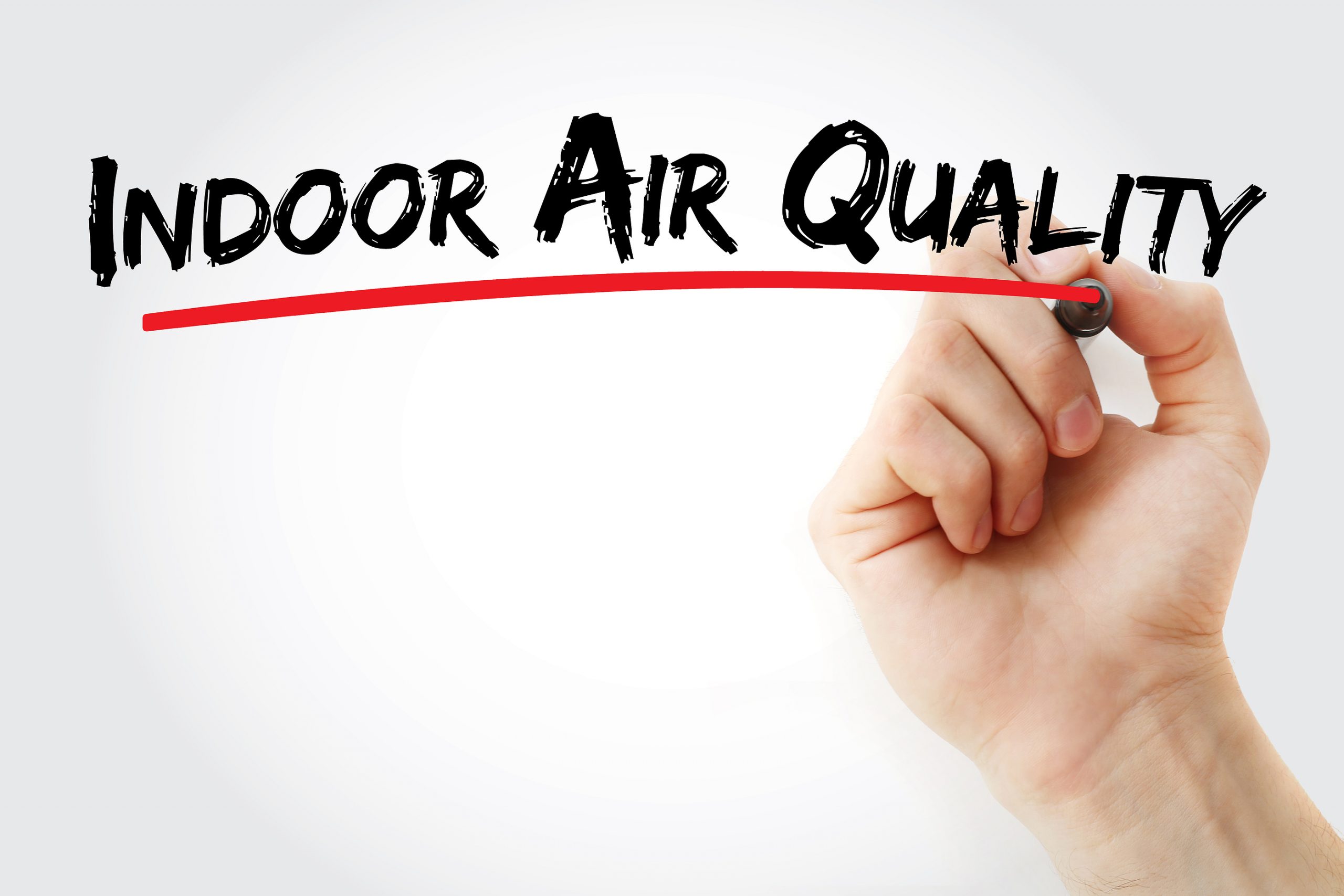As temperatures rise, your first instinct may be to head for the thermostat. But overworking your air conditioner can be hard on your wallet. Additionally, it causes more wear and tear on your A/C unit, which may have you paying for A/C repair or replacement sooner than you’d like. Did you know that there are alternative ways to cool your home? Yep, that’s right. There are tons of cooling methods you can use, either without running your air conditioner, or in tandem with efficient A/C use. So, instead of overworking your A/C (and hiking up your energy bill in the process), consider some cost-efficient alternatives. Here are 11 home-cooling hacks that can keep you and your house cool this summer. Test drive a couple of these tips this summer to keep you and your family cool. Of course, no matter what home-cooling “hacks” you try, A/C use will be inevitable on some days. Check out our tips to make sure you’re using your A/C efficiently this summer. Install ceiling fans and run them counterclockwise. Let’s start with some classic advice: If you haven’t already, you need to install ceiling fans. Running them counterclockwise in the summer will help push cool air down instead of pulling it up. (Set them clockwise in the winter for the opposite effect.)Run bathroom and kitchen exhaust fans. Hot air tends to linger after you cook dinner or shower. Turn on the exhaust fans to suck all that hot air out of your home.Close your curtains during the day. This will block out some sunlight and reduce the heat that comes in through the windows. (Take down any dark, synthetic drapes you may have. Opt for cotton or sheer curtains instead for filtered light).Change out your light bulbs. Most people don’t realize that their incandescent bulbs emit heat. According to the Center for Sustainable Energy, incandescent bulbs waste 90% of the energy they use, which is given off as heat. Switch them out for fluorescent or LED bulbs, instead. Not only are these bulbs cooler, but they’re also more efficient. Use the ice “hack” on your portable fan. Fill a bowl with ice and place it on a table or other surface that’s level with your portable fan. Then, turn on the fan for a blast of icy breeze with a cooling mist. Use this method for instant relief from muggy summer days.Invest in a Chillow or DIY your own. What’s cooler than the other side of your pillowcase? How about a Chillow? A Chillow is a cooling pad that you can place over your pillow. It works wonders for hot sleepers. You can also DIY your own cooling pillow by filling up a small pillowcase with rice and sewing it shut. Store the rice pillow in the freezer during the day, and at night, sleep on it like a regular pillow. The rice will keep its cold temperature for a while, making for a cool night’s rest.Apply heat-reducing film to your windows. Block out anywhere from 70-90% of the heat coming in through your windows with reflective film. Not only do window films cut down on excessive heat, but they also stop some of the cold air that seeps in through windows in the winter. Install duct boosters. If you want to draw more cool air into certain rooms, give your air ducts a boost! A duct booster fan is a fan that fits inside an air duct and can be turned on to increase the airflow in a room. Try this out if you have certain rooms that just won’t cool down. Cross ventilate your home. Most people know to open...
Read MoreAre you curious about what it takes to become an HVAC technician? Or do you have a student who is interested in a career in HVAC? If so, you’ve come to the right place. Working as an HVAC technician can offer you a fulfilling career taking care of the systems that keep people comfortable every day. Heating and air conditioning systems are a vital part of maintaining a comfortable and healthy environment for work, play, and everything in between in both residential and commercial settings. Read on to learn what an HVAC technician does, what the job outlook is, and how to get started on your HVAC career. What Does an HVAC Technician Do? HVAC technicians install, repair, and maintain heating and cooling equipment, which can include furnaces, air conditioners, ventilation equipment, climate control systems, refrigeration equipment, and more. Throughout the day-to-day of their jobs, technicians may be required to: Read blueprints and HVAC equipment specificationsAssemble and install HVAC units, thermostats, humidistats, and timers in residential and commercial buildings Connect HVAC systems to electrical, water, and fuel sourcesTest HVAC components and systems according to the manufacturer’s specificationsTest piping or tubing joints for leaksInspect, unclog, and clean ductsTroubleshoot common problems with heating and air conditioning equipmentMaintain HVAC units to keep them in good working orderClean and replace air filters and other malfunctioning partsSell service contracts for HVAC equipment maintenance or servicing HVAC technicians also work directly with customers, many of whom are experiencing stress because their heating or air conditioning systems aren’t working properly. Knowing how to treat customers with respect, patience, and honesty is a crucial part of a successful HVAC career. Job Outlook for HVAC Technicians The job outlook for the HVAC field is good. According to the U.S. Bureau of Labor Statistics, the industry is expected to see 5% growth from 2020 to 2030, with an average of about 38,500 job openings each year. This number includes new jobs in the HVAC industry, as well as jobs that open up as workers retire or shift to different occupations. In addition, the U.S. is currently experiencing a significant labor shortage, and the HVAC industry is not immune to that. If you are considering a career in HVAC, there are plenty of opportunities available. Steps to a Career in HVAC While becoming an HVAC technician doesn’t require you to obtain a college degree, there are a few requirements you need to meet, as well as additional education and certifications that can help you be more successful in your HVAC career. Here are the steps to take if you are interested in becoming an HVAC technician: Get a High School Diploma or Equivalent. Most states require a high school diploma or GED to pursue a job in HVAC. If you are still in high school or working toward your GED degree, try to take courses that focus on relevant subjects, like computer science, physics, math, or shop classes.Take Classes for Your HVAC Certificate. While there is no federal requirement for HVAC certification, many states do require technicians to be certified. (Even if your state doesn’t require it, a certificate helps you appear more reputable to potential customers.) Classes for an HVAC certificate take less than a year and include training in diagnostics, testing equipment and tools, and principles of mechanics, electronics, and electricity.Complete an Apprenticeship. An apprenticeship is not a requirement for a job in HVAC, but it can help you gain on-the-job training and experience that will make you more attractive to potential employers. Apprenticeships can last anywhere from three to five years, and involve a combination of coursework and practical training.Work Toward Additional Licenses and Certifications. There are a number of certifications you...
Read MoreYour home’s indoor air plays an important role in the health of you and your family. Poor indoor air quality can contribute to health problems like asthma and allergies, and the effects of toxins like radon and carbon monoxide can be even more serious. Testing your indoor air quality is an important part of ensuring your home’s air is safe to breathe. Here’s what you need to know about indoor air pollutants, signs of poor air quality, how to maintain good indoor air quality, and how to test the air in your home. What Health Hazards Are Commonly Found in Indoor Air? Your home’s indoor air can be affected by pollutants coming from a number of sources — from the materials used in construction to carpet and furniture fabrics to mold and mildew due to poor ventilation. Some of the most common pollutants found in homes are: Mold and mildew: typically grow on surfaces due to ventilation issues or high indoor humidityRadon: an odorless, colorless gas and the second leading cause of lung cancer after smokingCarbon monoxide: another odorless, colorless gas that can be deadly if left uncheckedVolatile organic compounds (VOCs): emitted by building materials and household products; can exacerbate existing respiratory conditionsParticulate matter, including dust mites and other allergens: can cause shortness of breath, chest congestion, or wheezing, and are linked to increased risk of heart-related health issues When Should I Test My Air? Signs of Poor Indoor Air Quality For the most part, the Environmental Protection Agency (EPA) doesn’t recommend general indoor air quality testing, and there is no single test that can measure every aspect of the air quality in your home. However, there are specific tests for some pollutants, so it can be helpful to know the signs and symptoms to watch for to determine what tests you will need. Some indoor air pollutants cause obvious symptoms: for instance, nausea, confusion, dizziness, and headaches are often signs of dangerous levels of carbon monoxide in the home. And mold and mildew are typically easy to spot. Other pollutants may require a bit more observation to narrow down. Notice, for instance, if you start coughing when you enter a certain room or have health symptoms that disappear when you’re at the office or on vacation. Symptoms of allergens or other particulate matter in your air can include: CoughingWheezingShortness of breathScratchy throatWatery eyes Radon, one of the most dangerous substances that can affect your indoor air, causes no immediate symptoms at all — but long-term exposure can lead to serious health problems. This is why radon testing is often performed when a home is sold. If you bought your home many years ago, or a radon test wasn’t done when you bought it, it may be a good idea to have one done now. How To Test Your Indoor Air Quality Evaluate any symptoms you are experiencing, along with input from your doctor. Once you have things narrowed down, you can have your home tested for the pollutants you suspect may be an issue. Radon test kits can be purchased online or in many home improvement stores, or you can hire a professional to do it for you. To test for other pollutants, you’ll need to hire someone. To find reputable indoor air quality specialists, look to an organization like the Indoor Air Quality Association for a list of members. Or ask a local real estate agent or home inspector for a recommendation — both should have connections to air quality specialists in your area who can help with both testing and mitigation of pollutants. Ways To Improve Indoor Air Quality Beyond testing your indoor air quality, there are a few things you can do...
Read MoreBasements are notoriously chilly, especially in our cold northern climate. If you only use your basement for storage, you may not need it to be warm and cozy. But if you have a basement family room, bedroom, or bathroom, you need it to be comfortable enough that you actually want to spend time down there. If your basement is freezing, there are a variety of tactics you can use to turn up the heat and improve energy efficiency. Here are a few ways to keep your basement warm this winter. Seal Leaks Cracks or gaps in your basement walls or floors allow cold air to seep into your home and heated air to escape. Check for cracks in the foundation, flooring, and walls, as well as gaps around windows and doors. Seal up small cracks with the appropriate caulk, foam insulation, or weather stripping. If you notice a significant crack in your home’s foundation, have a professional take a look at it to make sure you don’t have bigger issues on your hands. Update Older Windows Replace old drafty windows and doors with new, energy-efficient options. If your windows are warped, broken, or have damaged seals or single-pane glass, it may be time to swap them out. When replacing windows, choose energy-efficient varieties, such as double- or triple-paned glass windows. Add More Insulation Insulation reduces the rate of heat transfer in a space — in other words, it keeps warm air in and cold air out. If your basement isn’t insulated sufficiently, it won’t retain heat as well as it should, and your other efforts to keep your basement warm won’t be as effective as they would be otherwise. If your basement already has interior walls covering the foundation, you may be able to add additional spray foam insulation. If your basement foundation is visible, you might want to consider framing in your basement walls so you can add insulation. In addition, check to be sure you have enough insulation around windows and doors, and add more as necessary. Install Carpet or Add Area Rugs Your walls aren’t the only factor in keeping your basement warm: the type of flooring you have plays a role as well. If you have bare concrete floors, consider covering them up with wall-to-wall carpet or area rugs. Not only is carpet nicer to walk on, it can also help insulate your floor and keep your basement warmer. Even placing throw rugs over the more highly-trafficked areas of your basement can help keep your feet warm and insulate the floor a bit. Note that if your basement tends to leak or flood regularly, you’ll want to take care of that first before installing carpet or rugs. Install In-Floor Heating An in-floor radiant heat system is another way to warm up your basement. These systems circulate hot water beneath your floor, warming the cement. That heat rises throughout the room and keeps your basement warm. Keep in mind that in-floor heat is easier to install in a new construction home. It is still possible to install in existing basement flooring, but the process is more involved. Add an Electric Baseboard Heater or Wood Stove You could also consider installing an individual heating unit in your basement, such as an electric baseboard heater or a wood or pellet stove. If you’re up for hauling firewood or bags of wood pellets into your basement, a stove can add cozy ambience in addition to heat. Electric baseboard heaters aren’t as attractive as a wood stove, but if that’s not a concern for your space, they’ll do the job well. You’ll need one for each room, as the heat from baseboard heaters doesn’t easily travel from room to room. You can...
Read MoreThere’s nothing like coming home to a warm house after being out in the cold. But it’s hard to keep your home warm and comfortable if your HVAC system isn’t working properly. Luckily, many common winter HVAC problems can be prevented by learning more about them and implementing proper maintenance and care of your heating system. 1. Frozen Pipes Frozen pipes are a common problem when temperatures begin to drop. Cold weather can freeze water inside pipes and coils, causing hot water heaters and steam radiators to fail. Even worse, frozen water can expand inside pipes, causing them to burst from the pressure buildup. Properly insulating exposed pipes with foam insulation (especially those near external walls) and maintaining indoor temperatures above 55 degrees can help keep your pipes from freezing. 2. Uneven Heating If you notice that some rooms are colder than others, it could be a sign of something as simple as air leaks around windows and doors caused by insufficient insulation, cracks, or holes. Or it could be that your registers aren’t fully open (an easy thing to check if you are experiencing this issue). Alternatively, it could indicate a problem with your HVAC system. Uneven heating can be caused by a number of issues with your heating system, including a malfunctioning blower motor, a dirty air filter, or clogged ductwork. If you are experiencing uneven heating in your home, check your air filter and have your system inspected and your vents and ducts cleaned out properly. Learn more about Titan’s air duct cleaning services here. 3. Dirty HVAC Filter If your HVAC system uses a forced air furnace or heat pump, it’s vital to ensure your air filter stays clean to keep your system functioning properly and to prevent bigger issues with your heating system. Your air filter keeps dust out of your heating unit so it can run efficiently. As the air filter becomes clogged with dust, dirt, or debris, air can no longer flow freely through the unit. Blockages can lead to decreased air flow, requiring your HVAC system to work harder to keep your home warm. Get in the habit of checking your air filter monthly, replacing it as needed. During the heating season, you may need to change it as often as once a month; in warmer months you may be able to go as long as three months before replacing it. 4. Faulty Heat Pump If your system has an exterior heat pump, winter weather can damage it, leading to broken fan motors, coil blockages, and a failure to defrost. If the coils and fan are not kept clear of ice, your heat pump won’t function properly. Make sure your heat pump has automatic defrost settings to keep thick layers of ice from building up. 5. Broken Thermostat Your thermostat is what regulates your heating system. If it isn’t functioning properly, your HVAC system won’t work as well as it should. A faulty thermostat can result in a wide variety of HVAC issues, including irregular heat cycling, uneven heating, and more. Thermostat failure can be caused by faulty wiring or dying batteries. Or it may just need to be recalibrated. Older, worn out models may have run their course and need to be replaced. Replacing your old thermostat with a new programmable one will improve your energy efficiency, save on heating costs, and allow for more precise temperature control for improved comfort. Avoid These Common Winter HVAC Problems With Help From Titan To prevent these and other common winter HVAC problems, consider an HVAC maintenance plan from Titan. Routine HVAC maintenance can improve heating system efficiency, reduce operating costs, increase the lifespan of your equipment, and improve the quality of your indoor...
Read MoreHeating season can be tough on your HVAC system. If you don’t keep your heating and cooling system well-maintained, once you switch the heat on for the winter the wear and tear from previous years will quickly make itself known in the form of breakdowns and inefficient heating. Luckily, you can easily get ahead of common winter heating problems with some preventive HVAC maintenance. A little maintenance now can help extend the life of your heating and cooling system and save you money while ensuring a comfortable home all winter long. Make sure your heating system is ready to keep you warm this winter with these maintenance tips. 1. Replace the Air Filter A dirty air filter will make your furnace run harder than it should, driving up your energy bills and potentially damaging your HVAC system. It’s best to start the heating season with a clean filter, then change it regularly. Make sure to check your filter every month. Depending on the type of air filter you have, you may not need to replace it every time, but you should still be in the habit of checking it monthly. 2. Clean the Air Vents When you vacuum your home, make it a habit to vacuum out your air vents as well. This can help prevent blockages and maintain good indoor air quality. If you notice buildup in your vents that vacuuming doesn’t seem to take care of, it may be time to schedule a professional air duct cleaning. At Titan, we recommend cleaning your air ducts at least once every 2-3 years to allow your HVAC system to operate at its highest level of efficiency. 3. Check Your Thermostat Replace your thermostat’s batteries so it is ready to get you through the heating season. (While you’re at it, it’s a good idea to replace the batteries in your smoke and carbon monoxide detectors as well, especially if you haven’t done so in a while). And if you don’t yet have a programmable thermostat, now is the time to upgrade. Additionally, check to ensure your thermostat is programmed to meet your needs this winter. To save energy, set your thermostat to a cooler temperature at night and while you’re at work and a warmer temperature during the times you are home and awake. 4. Have Worn Parts Replaced It’s easier to fix potential problems now than when they become heating emergencies later this winter. To ensure your HVAC system is prepared to run smoothly all season, replace worn parts before they break. Ideally, you should have your heating system inspected each fall, where an HVAC professional will check for signs of wear or malfunction. This way you can have any problem parts replaced before they break or cause damage to other components of your system. 5. Cover Your Outdoor A/C Unit Your A/C unit may not be the first thing on your mind as temperatures get colder, but now is the time to ensure it is protected from damage over the winter. If your HVAC system has an outdoor A/C unit, be sure to cover it for the winter. This will protect it from ice, snow, and debris buildup and help prevent the need for extensive repairs before you turn your A/C on next summer. 6. Add Insulation While insulation may not seem to directly affect the performance of your heating and cooling system, it does play a key role in the overall energy efficiency of your home. If your home is lacking in insulation, your furnace will need to work harder to keep your home warm, and you’ll notice the effects of this in your heating bill. Check to ensure your attic has enough insulation, and add more as...
Read MoreThe filter in your heating and cooling system plays an important role in maintaining good indoor air quality in your home. It works to filter dust, pollen, and other small particles out of the air, creating cleaner, healthier air for you and your family to breathe. It also helps protect your HVAC system by keeping it free of larger particles that could damage it. This is why it is so important to make sure you are using the right type of air filter for your system, budget, and air quality needs, and that you make filter replacement part of your routine HVAC maintenance. There are 7 commonly used types of HVAC filters available for residential heating and cooling systems, but before we get to that, let’s talk a little bit about how those filters are rated. Rating the Different HVAC Filter Options: MERV Rating MERV stands for minimum efficiency reporting value. The MERV rating is a consumer standard developed by the American Society of Heating, Refrigerating, and Air Conditioning Engineers (ASHRAE). MERV measures a filter’s ability to capture particles as small as 0.3 microns to 10 microns. Ratings range from 1 to 20, with the ideal range for most homes between 8 and 13. The higher the MERV rating, the more effective a filter is. However, be aware that MERV ratings at the higher end of the spectrum can make it more difficult for your HVAC system to pull in air, forcing it to work harder (and potentially shortening its lifespan). Fiberglass Air Filters Fiberglass filters are made with strands of fiberglass spun together. They are the most commonly used and least expensive option on the market. They are highly effective at keeping large particles of dirt and debris out of your heating system. However, they are less effective at filtering dust and other small particles out of your air. Because of this, these filters aren’t a good option for those with allergies or respiratory problems. Fiberglass filters typically have a MERV rating of 4. Pleated Air Filters Pleated air filters are made of either polyester or cotton fabric that is folded to create pleats. They are slightly more expensive than fiberglass filters, but are more effective at filtering smaller particles like dust, pollen, mold spores, and pet dander. The increased surface area created by the fabric pleats allow for better filtration: The more pleats a filter has, the better it filters particles out of your home’s air. This type of filter can also help reduce the noise your HVAC fan makes. Pleated filters are available in either disposable or reusable options, and can be recycled as well. MERV ratings of pleated filters can range from 5 to 13. HEPA Filters High-efficiency particulate air filters, or HEPA filters, are the best option for people with allergies and respiratory issues. This type of filter does an excellent job of cleaning your home’s air. In fact, they are effective at screening out up to 99.97% of contaminants, including dust, pollen, mold, pet dander, viruses, bacteria, cigarette smoke, and other irritants. While HEPA filters are a heftier investment up front, they are longer lasting than other air filters, making them more cost effective in the long run. HEPA filters are usually rated 11 or higher on the MERV scale. Washable Air Filters Washable air filters can be cleaned and reused as needed, rather than thrown out and replaced. They cost more initially, but save you money over the long term because you don’t have to replace them. If you use washable filters, it is crucial to maintain them properly. For instance, be sure to let them dry completely before putting them back into your HVAC system, as even a small amount of moisture left...
Read MoreManaging the humidity level in your home is an under-discussed facet of maintaining good indoor air quality. When the humidity in your home is either too high or too low, it can degrade the quality of your air, leading to damage to your home and your belongings as well as negative health effects for you and your family. Humidity control through the use of a humidifier or dehumidifier helps balance your home’s humidity levels for better indoor air quality. Ideal Indoor Humidity Levels Humidity is the amount of water vapor in the air. Relative humidity is the percentage of water vapor in the air at a given temperature compared with the maximum amount of water vapor the air can hold at that temperature. When we talk about indoor humidity levels, we are using a measure of relative humidity. Ideally, humidity levels in your home should be between 35 and 60%. This is the sweet spot for comfort level as well as for healthy indoor air quality. Outside of this range, your home will feel less comfortable and you will begin to notice the effects of poor indoor air quality on your health. How Does Humidity Affect Air Quality? Humidity levels affect how warm or cool your home feels. In the winter, when the air dries out due to drier outdoor air and running your heating system, low humidity can make your home feel colder, even when your thermostat is set at an otherwise comfortable temperature. The higher the moisture content in the air, the warmer your home will feel. Additionally, bacteria and viruses that cause respiratory illnesses thrive in environments with significantly high or low humidity levels. High humidity can also increase the prevalence of mold, dust mites, and other allergens in your home. These things can have a significant impact on your home’s air quality and your family’s health and wellbeing. Health Effects of Low and High Humidity Both extremely low and extremely high indoor humidity can negatively affect your health. Low Humidity When your home’s humidity levels are balanced, moisture in the air weighs down particles of bacteria, viruses, and other pollutants, causing them to fall. But when humidity in your home is low, the drier air allows these particles to move more freely throughout your space. The less moisture there is in the air, the more freely the particles can circulate. Low humidity can cause: Dry skin, rashes, and infectionsChapped lipsItchy eyes and noseDry sinuses and throatDry coughNosebleedsWorsened asthma symptomsand more In addition, dry mucous membranes in the sinuses can make it more difficult for your body to fight off the germs that cause colds, flu, and other respiratory illnesses. Improving your indoor air quality by balancing your home’s humidity levels can help control the spread of infectious diseases. High Humidity On the other end of the spectrum, high indoor humidity can also cause negative health issues, such as: Growth of mold and mildewIncreased prevalence of dust mitesSinus stuffinessDifficulty breathingHeadachesEye irritationSkin irritationAggravated asthma symptoms In addition, high humidity can make warm temperatures feel even warmer, leading to heat-related illnesses like heat rash, heat exhaustion, or even heat stroke. Benefits of Home Humidity Control Luckily, the majority of adverse health effects caused by extreme levels of humidity can be minimized through humidity control. When your home’s humidity levels are kept within the ideal range, you will experience: Healthier skinA more comfortable sleeping environmentReduction in dry, scratchy throat, eyes, and sinusesImproved asthma symptomsReduced risk of airborne illness transmissionAnd many more health and wellness benefits Controlling the humidity in your home is as simple as installing a humidifier or dehumidifier, depending on your needs. At Titan, we install Aprilaire whole-house humidifiers and Ultra-Aire whole-house or free-standing dehumidifiers. Installing a whole-house humidifier or dehumidifier...
Read MoreJust like your car, your HVAC system needs routine preventative maintenance to keep it running at its best. HVAC repairs can be costly, but luckily there are a few simple things you can do each month to keep your system in shape and avoid unnecessary repairs. These three tasks are at the top of our list for routine HVAC maintenance. 1 - Change the Air Filter Operating your HVAC unit with a dirty or clogged filter can cause damage to your equipment and reduce your indoor air quality. Your air filter needs to be changed every 30-90 days and checked for dirt and clogs every month. To check it, remove the air filter and look for damage. If there is damage, or if you haven’t changed the filter in a while, swap it out for a new one. If there is no damage and you want to extend the filter’s life for another month, gently wipe off any dirt with a damp cloth. The more people and pets you have in your home, the more often you will need to change your filter. When buying new filters, look for a high MERV rating, which is a measure of energy efficiency. If you have allergies, consider a HEPA filter to improve your air quality even more. 2 - Check Drains and Hoses Take a look at your A/C unit’s drains and hoses each month, looking for obstructions and leaks. Inspect the drain pans and condensate drains, ensuring they are unobstructed and clean. This will keep excess moisture from being trapped in the unit or inside the house. 3 - Clean the Outside Unit Cleaning the outside unit of your HVAC system is just as important as tending to the indoor unit. Each month, check to make sure your outdoor unit is free of leaves, twigs, or other debris, and that trees or shrubs offer at least 2-3 feet of clearance around the unit. Remove the fan cage on top of the unit and vacuum out the interior. Use a gentle spray from your garden hose to clean dust off of the fins, and wipe down the outside of the unit as well. Doing these three things each month, along with routine annual maintenance, will help keep your HVAC system in prime condition, so you can stay cool in the summer and warm in the winter. If you are in need of HVAC maintenance or service, Titan Heating and Cooling has your back — give us a call at 651.714.8931. ...
Read MoreWhen we consider the quality of the air we breathe, we tend to think of outdoor air pollution, but we don’t often think about pollution in the air inside our homes. But in many cases, indoor air can be just as polluted, if not more so, than the air outside. Poor indoor air quality can cause or contribute to an array of health problems - some minor, others much more serious. Let’s take a look at how the air you breathe could be impacting your health. What Causes Poor Indoor Air Quality? Many things can cause the air in your home to become polluted: Dust Mold Mildew Smoke from cigarettes or cooking Fumes from carpet and furniture Bacteria or viruses Pet dander Cleaning products Air fresheners and more can all diminish the quality of the air you breathe. All of your day-to-day activities ultimately contribute in one way or another to the air quality in your home. Additionally, improper ventilation and high humidity can increase the concentration of pollutants in the air, further contributing to the problem. Health Effects Associated With Poor Air Quality The effects of exposure to poor indoor air quality vary depending on many factors, including the type and concentration of pollution in the air, the sensitivity level of each person, and the length of exposure to the pollutant. If you have symptoms at home but they diminish or disappear when you leave, it’s possible you are experiencing the effects of poor air quality. Some of the health effects that polluted indoor air contributes to are: Immediate effects: Irritation of the eyes, nose, throat, or skin Headaches Dizziness Fatigue Shortness of breath or mild asthma Long-Term Effects: Respiratory disease Rapid heartbeat or heart disease Nausea or vomiting Worsening asthma symptoms Lung cancer These long-term effects can happen in cases where you are exposed to particularly harmful pollutants (such as radon or ozone) or to a high concentration of less harmful pollutants for an extended period of time, and you may not notice more severe symptoms for many years. Also, some people are more sensitive to pollutants than others, so all family members may not experience the same symptoms. How to Improve Indoor Air Quality There are a number of ways to improve the quality of the air in your home, ranging from simple things you can try on your own to bigger changes that require help from a professional. Opening up the windows for ventilation, opting for cleaning and personal care products that produce less toxic fumes, running a dehumidifier on humid days, changing your air filter regularly, and having your HVAC system professionally cleaned can significantly improve your indoor air quality. For an even greater improvement in your home’s air quality, consider installing a whole-house ventilation system or adding an air purifier to an existing system. Product Spotlight: BreatheCLEAN Air Purifier Here at Titan we recommend the BreatheCLEAN Total Home Air Purifier for the ultimate in indoor air purification. BreatheCLEAN uses the power of pure ultraviolet light to kill airborne microorganisms such as germs, bacteria and mold. It easily installs into the existing ductwork of your home’s central ventilation system and continually cleans the air as it circulates. No competing model offers more effective purification for your home, and the BreatheCLEAN system costs less than you’d think. If you’re ready to improve the quality of your indoor air with an air purifier, upgraded air filter, new dehumidifier, or professional HVAC cleaning, Titan Heating & Cooling has what you need. Give us a call at 651.714.8931 or contact us here. ...
Read More- 1
- 2

